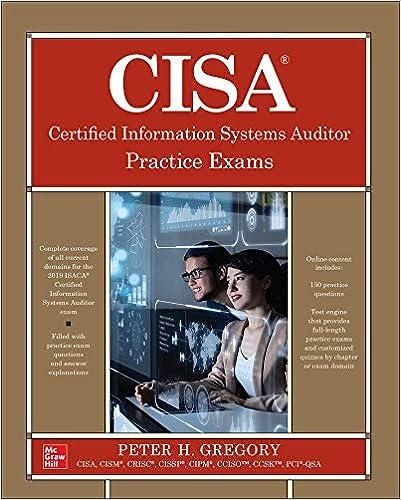The following data relate to the operations of Shilow Company, a wholesale distributor of consumer goods: a. The gross margin is 25\% of sales b. Actual and budgeted sales data: c. Sales are 60% for cash and 40% on crede. Credit sales are collected in the month following sale. The accounts receivable at March 31 are a result of March credit sales. d. Each month's ending inventory should equal 80% of the following month's budgeted cost of goods sold e. One-half of a month's Inventory purchases is paid for in the month of purchase, the other half is paid for in the following month. The accounts payoble at Morch 31 are the resolt of Morch purchoses of inventory. f Monthly expenses are as foliows commissions, 12\% of sales, rent, $3,600 per month; other expenses (excluding depreciatior), 6% c. Sales are 60% for cash and 40% on credit. Credit sales are collected in the month following sale. The accounts receivable at March 31 are a result of March credit sales. d. Each month's ending inventory should equal 80% of the following month's budgeted cost of goods sold. e. One-half of a month's inventory purchases is paid for in the month of purchase; the other half is paid for in the following month. The accounts payable at March 31 are the result of March purchases of inventory. f. Monthly expenses are as follows: commissions, 12% of sales, rent, $3,600 per month; other expenses (excluding depreciation), 6% of sales. Assume that these expenses are paid monthly. Depreciation is $855 per month (includes depreciation on new assets): 9. Equipment costing $2,800 will be purchased for cash in April h. Management would like to maintain a minimum cash balance of at least $4,000 at the end of each month. The company has an agreement with a local bank that allows the company to borrow in increments or $1,000 at the beginning of each month, up to a total loan balance of $20,000. The interest rate on these loans is 18 per month and for simplicity we will assume that interest is not compounded. The company would, as far as itis able. repay the loan plus accumulated interest at the end of the quarter Required: Using the preceding data: 1. Complete the schedule of expected cash collections. 2. Complete the merchandise purchases budget and the schedule of expected cash disbursements for merchandise purchases. 3. Complete the cash budget. 4. Prepare an absorption costing income statement for the quarter enced June 30 5. Prepare a balance sheet as of June 30 . Shilow Company Income Statement For the Quarter Ended June 30 Selling and administrative expenses: \begin{tabular}{|l|l|l|} \hline Commissions & & \\ \hline Rent & & \\ \hline Other expenses & & \\ \hline Depreciation & & \\ \hline & & \\ \hline Sales & & 272,000 \\ \hline Net operating income & & 272,000 \\ \hline Interest expense & & \\ \hline Net income & & \\ \hline \end{tabular} The following data relate to the operations of Shilow Company, a wholesale distributor of consumer goods: a. The gross margin is 25\% of sales b. Actual and budgeted sales data: c. Sales are 60% for cash and 40% on crede. Credit sales are collected in the month following sale. The accounts receivable at March 31 are a result of March credit sales. d. Each month's ending inventory should equal 80% of the following month's budgeted cost of goods sold e. One-half of a month's Inventory purchases is paid for in the month of purchase, the other half is paid for in the following month. The accounts payoble at Morch 31 are the resolt of Morch purchoses of inventory. f Monthly expenses are as foliows commissions, 12\% of sales, rent, $3,600 per month; other expenses (excluding depreciatior), 6% c. Sales are 60% for cash and 40% on credit. Credit sales are collected in the month following sale. The accounts receivable at March 31 are a result of March credit sales. d. Each month's ending inventory should equal 80% of the following month's budgeted cost of goods sold. e. One-half of a month's inventory purchases is paid for in the month of purchase; the other half is paid for in the following month. The accounts payable at March 31 are the result of March purchases of inventory. f. Monthly expenses are as follows: commissions, 12% of sales, rent, $3,600 per month; other expenses (excluding depreciation), 6% of sales. Assume that these expenses are paid monthly. Depreciation is $855 per month (includes depreciation on new assets): 9. Equipment costing $2,800 will be purchased for cash in April h. Management would like to maintain a minimum cash balance of at least $4,000 at the end of each month. The company has an agreement with a local bank that allows the company to borrow in increments or $1,000 at the beginning of each month, up to a total loan balance of $20,000. The interest rate on these loans is 18 per month and for simplicity we will assume that interest is not compounded. The company would, as far as itis able. repay the loan plus accumulated interest at the end of the quarter Required: Using the preceding data: 1. Complete the schedule of expected cash collections. 2. Complete the merchandise purchases budget and the schedule of expected cash disbursements for merchandise purchases. 3. Complete the cash budget. 4. Prepare an absorption costing income statement for the quarter enced June 30 5. Prepare a balance sheet as of June 30 . Shilow Company Income Statement For the Quarter Ended June 30 Selling and administrative expenses: \begin{tabular}{|l|l|l|} \hline Commissions & & \\ \hline Rent & & \\ \hline Other expenses & & \\ \hline Depreciation & & \\ \hline & & \\ \hline Sales & & 272,000 \\ \hline Net operating income & & 272,000 \\ \hline Interest expense & & \\ \hline Net income & & \\ \hline \end{tabular}









